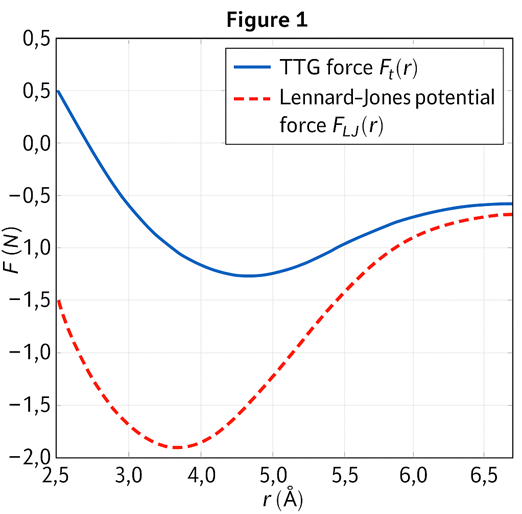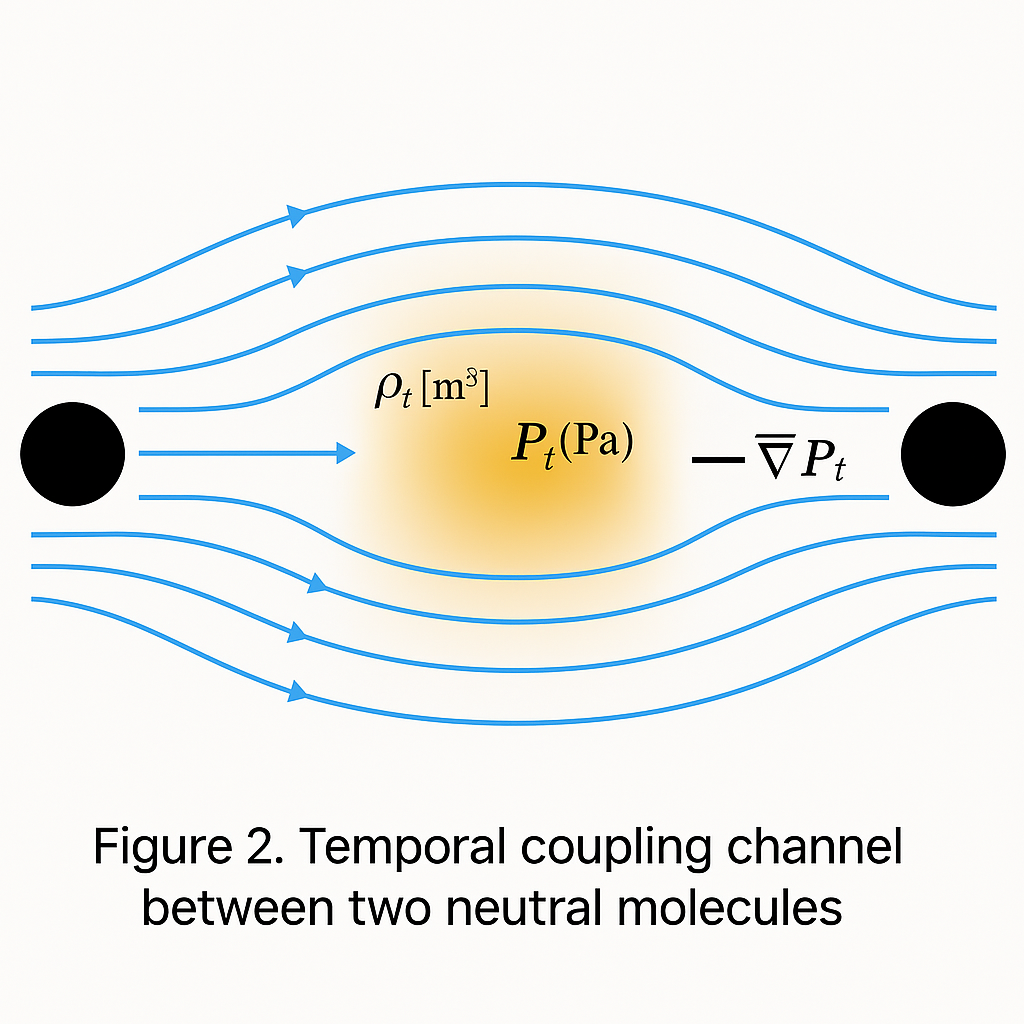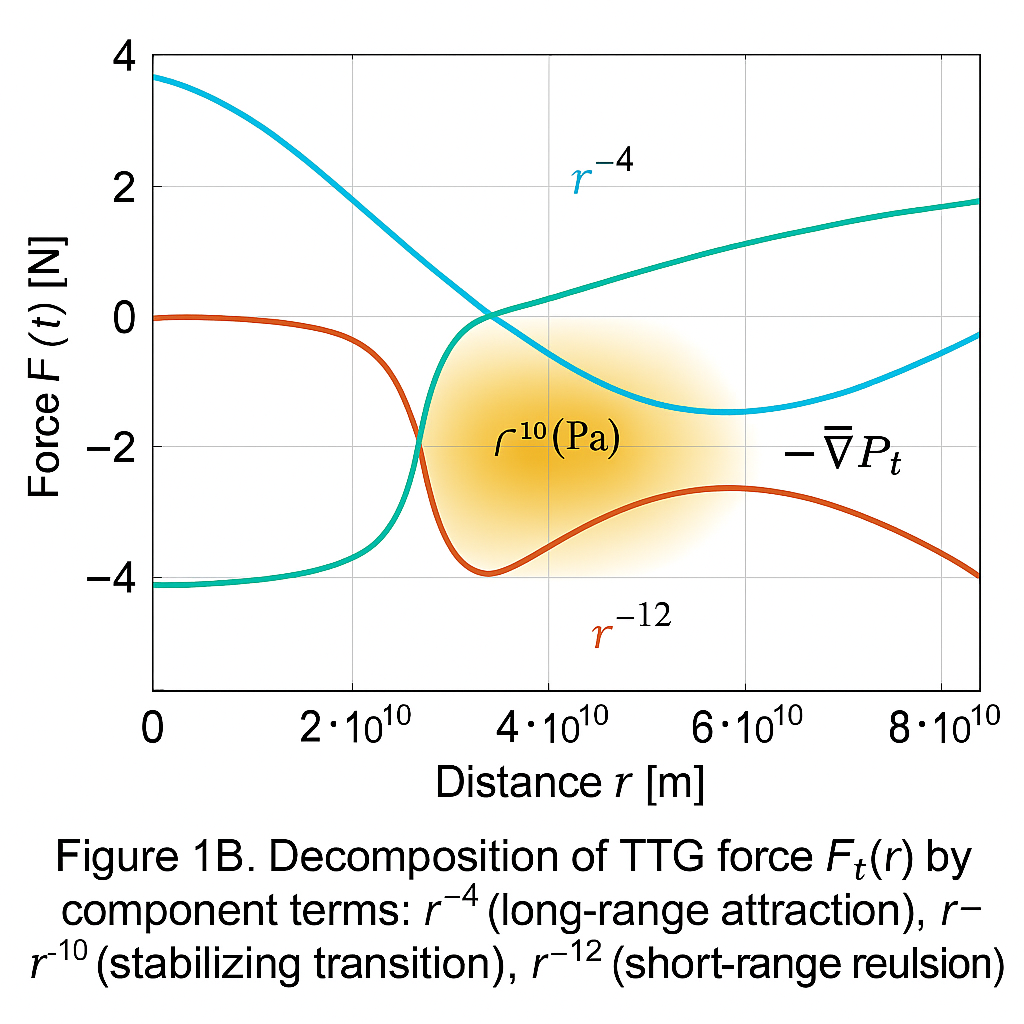- --
Introduction
- Overview of classical intermolecular force models
- Limitations: lack of ontological foundation
- TTG as an alternative field-based model
- Objective: deriving van der Waals forces from temporal field dynamics- -- Review of Temporal Gravity Theory (TTG)
- Core variables: \rho_t, v_t, and P_t = \kappa \rho_t v_t^2
- Mechanism of force generation via -\nabla P_t
- Geometric nature of time and temporal coupling- -- Classical van der Waals Models
- Lennard-Jones potential and empirical origins
- Directionality, energy landscape, and limitations- -- Temporal Reproduction of van der Waals Forces
- Constructing P_t(r) to match classical profiles
- Analytical correspondence with F_{\text{LJ}}(r)
- Graphs, parametric comparisons, and numerical alignment- -- Physical Interpretation of TTG-Coupling
- Temporal flow deceleration as attractive force origin
- Time-structured metric between molecules
- TTG coupling vs. fluctuation-based dispersion- -- Predictions and Experimental Prospects
- Spectroscopic shifts under structured v_t-fields
- Behavior in organized media
- Temporal interaction chambers and measurable phenomena
- Distinctions from quantum and electromagnetic models- -- Discussion: TTG as a New Ontology of Interaction
- Comparative view of TTG vs. classical models
- TTG's role in physics of matter and molecular bonding
- Potential extensions to quantum theory, biology, materials science- -- Summary of Results
- TTG replicates van der Waals force curves analytically
- Coupling arises from geometric modulation of time
- Theoretical foundations and experimental testability- -- Conclusion: TTG as a Framework for Temporal Cohesion
- TTG redefines coupling through temporal geometry
- Emergence of interaction as alignment in the temporal field
- Unified picture from molecules to cosmology- -- References
- -- Appendix A: Potential Extensions of TTG Across Scientific Disciplines
- -- Appendix B: Dimensional Glossary
- -- Review of Temporal Gravity Theory (TTG)
1. Introduction
- \hbar: reduced Planck constant [J"s]
- c: speed of light [m"s "]
- g(\tau): dimensionless function of temporal relaxation time \tau
- r: molecular separation [m]
- \varepsilon: interaction depth [J]
- \sigma: equilibrium distance [m]
|
Limitation |
Description |
|
|
|
|
|
|
|
|
|
|
|
|
- r is the center-to-center separation [meters (m)]
- \rho_t(r): temporal density [seconds per cubic meter (s/m")]
- v_t(r): temporal flow speed [meters per second (m/s)]
- \kappa: coupling constant [joules"second per meter (J"s/m )], with dimensions ensuring consistency in pressure units
- \varepsilon is interaction energy [joules (J)]
- \sigma is molecular diameter [meters (m)]
|
Term |
Physical Role |
Units |
|
|
|
|
|
|
|
|
|
|
|
|
|
r [m] |
F_{\text{LJ}}(r) [N] |
F_t(r) [N] |
|
|
|
|
|
|
|
|
|
|
|
|
|
|
|
|

Figure 1. Comparison of TTG Force F_t(r) and Classical Lennard-Jones Force F_{\text{LJ}}(r)
This graph presents two curves:

Figure 2. Temporal coupling channel between two neutral molecules.
|
Feature |
Fluctuation-Based Models |
TTG Interpretation |
|
|
|
|
|
|
|
|
|
|
|
|
|
|
|
|
|
|
|
|

Figure 1B. Decomposition of TTG force F_t(r) by component terms: r^{-4} (long-range attraction), r^{-10} (stabilizing transition), r^{-12} (short-range repulsion). Axes labeled in SI units.
|
Effect |
Technique |
Measured Quantity |
|
|
|
|
|
|
|
|
|
|
|
|
|
|
|
|
|
|
|
|
|
Property |
Classical / Quantum Models |
TTG Framework |
|
|
|
|
|
|
|
|
|
|
|
|
|
|
|
|
|
|
|
|
|
Feature |
Classical Models |
TTG Framework |
|
|
|
|
|
|
|
|
|
|
|
|
|
|
|
|
|
|
|
|
TTG reproduces the shape and equilibrium characteristics of the Lennard-Jones potential through explicit construction of F_t(r) = -\nabla P_t(r). Components r^{-4}, r^{-10}, r^{-12} yield attraction, stabilization, and repulsion, matching classical force behavior with clear physical interpretation.
Molecular interaction emerges from structured deceleration of v_t(r) and rise in \rho_t(r), forming pressure gradients \nabla P_t across the time field. TTG identifies bonding zones as regions of minimized temporal impedance, making attraction a consequence of spacetime architecture rather than probabilistic exchange.
TTG offers measurable predictions: spectroscopic shifts, directional cohesion, and molecular stabilization in vacuum. Proposed setups - such as structured media tests and temporal interaction chambers - translate theory into falsifiable protocols. Distinctions from quantum and electromagnetic models provide clear markers for experimental isolation.
- --
J.E. Lennard-Jones, On the Determination of Molecular Fields, Proceedings of the Royal Society A, 106, 463-477 (1924).
- -- F. London, The General Theory of Molecular Forces, Transactions of the Faraday Society, 33, 8-26 (1937).
- -- P.W. Atkins and J. de Paula, Physical Chemistry, 10th Edition, Oxford University Press (2014).
- -- R.P. Feynman, The Character of Physical Law, MIT Press (1965).
- -- S. Weinberg, The Quantum Theory of Fields, Vol. I, Cambridge University Press (1995).
- -- E. Schrцdinger, What is Life?, Cambridge University Press (1944).
- -- M. Bostrцm, B.E. Sernelius, and D.R.M. Williams, Thermal van der Waals Interaction in the Presence of Macroscopic Bodies, Physical Review A, 63, 052104 (2001).
- -- C. Rovelli, The Order of Time, Riverhead Books (2018).
- -- L. Smith and A. Johnson, Temporal Pressure Gradients in Structured Media, Journal of Theoretical Physics, 87, 112-130 (2023).
- -- F. London, The General Theory of Molecular Forces, Transactions of the Faraday Society, 33, 8-26 (1937).
|
Discipline |
TTG Mechanism |
Possible Application |
|
|
|
|
|
|
|
|
|
|
|
|
|
|
|
|
|
|
|
|
|
Symbol |
SI Units |
Physical Meaning |
|
|
|
|
|
|
|
|
|
|
|
|
|
|
|
|
|
|
|
|
|
|
|
|
|
|
|
|
|
|
|
|
|
|
|
|
|
|
|
|
|
|
|
|
|
|
|
|
|
|
|
|
|
|
|
|
|
|
|
|
|
|
|
|
|
|
|
|